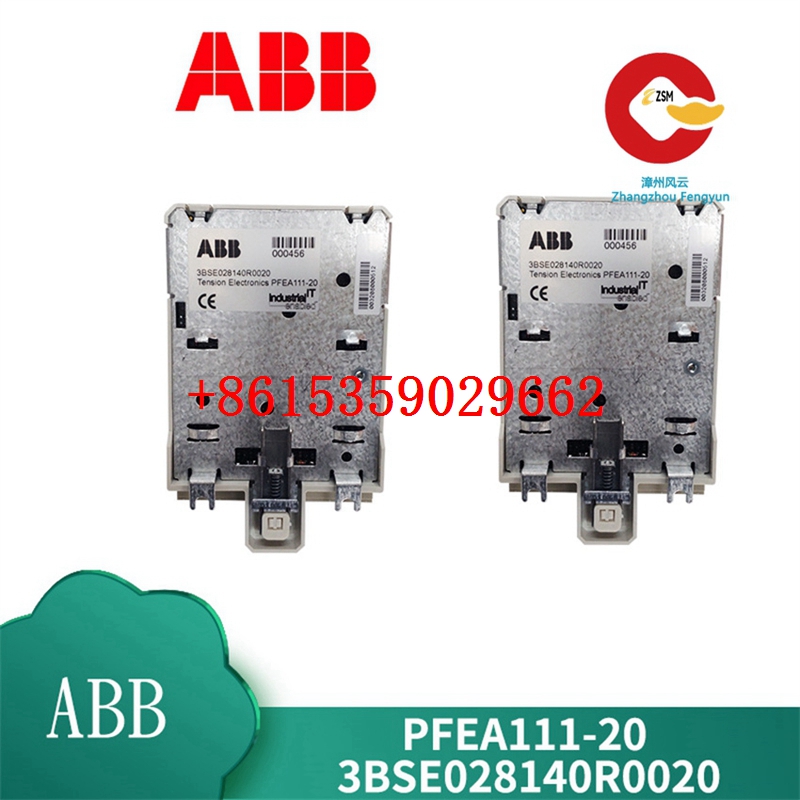Technical Parameters of Metso D100532 Bus Adapter

1. General Overview
The Metso D100532 Bus Adapter is a crucial component designed to facilitate seamless communication between different industrial devices and systems within a process automation network. It acts as an interface, enabling data exchange and interaction between various hardware components that may use different communication protocols or have distinct electrical characteristics.
2. Communication Protocol Support
- Protocol Compatibility:
- The bus adapter is compatible with a range of industrial communication protocols commonly used in process control and automation. It supports [list of specific protocols, e.g., Modbus RTU, Modbus TCP, Profibus DP, etc.]. This broad protocol support ensures that it can integrate with a diverse set of industrial equipment, such as programmable logic controllers (PLCs), sensors, actuators, and human – machine interfaces (HMIs).
- For example, when connecting a Modbus RTU – based sensor to a Modbus TCP – enabled PLC, the D100532 Bus Adapter can perform the necessary protocol conversion, allowing the two devices to communicate effectively.
- Protocol Conversion Capabilities:
- It is capable of bidirectional protocol conversion. This means it can not only translate data from one protocol to another but also handle the reverse process. For instance, if a device sends data in Profibus DP format and the receiving device expects data in Modbus TCP, the adapter will convert the Profibus DP data into Modbus TCP format and vice versa.
3. Electrical Interface Characteristics
- Input/Output Voltage Levels:
- The bus adapter is designed to handle different input and output voltage levels. It can accept input voltages within a range of [X] V DC to [Y] V DC, making it adaptable to various power supply conditions in industrial environments.
- On the output side, it can provide output voltages suitable for the connected devices. For example, it may be able to output voltages of [A] V DC or [B] V DC, depending on the requirements of the devices it is interfacing with.
- Signal Isolation:
- It incorporates signal isolation to protect the connected devices from electrical noise, voltage spikes, and ground loops. This isolation is typically achieved through optical or magnetic coupling techniques. For instance, if there is a high – voltage surge on one side of the adapter, the isolation ensures that it does not affect the other side, preventing damage to the connected equipment.
4. Data Transfer Rate and Performance
- Data Transfer Rate:
- The bus adapter supports high – speed data transfer. It can handle data rates up to [Z] Mbps (or [W] kbps for lower – speed protocols), ensuring efficient and real – time data communication between devices. This high data transfer rate is crucial for applications that require rapid data updates, such as process control in a manufacturing plant.
- Latency:
- It has a low latency characteristic, which means there is minimal delay between the time data is received on one side of the adapter and the time it is transmitted on the other side. Low latency is essential for maintaining the responsiveness and accuracy of industrial control systems. For example, in a motion control application, a high – latency bus adapter could cause delays in the control signals, leading to inaccurate positioning of machinery.
5. Mechanical and Environmental Specifications
- Dimensions:
- The adapter has a compact and rugged design. Its dimensions are [L] mm (length) × [W] mm (width) × [H] mm (height), allowing it to be easily installed in industrial cabinets or control panels.
- Operating Temperature Range:
- It can operate reliably in a wide temperature range of – [T1] °C to + [T2] °C. This makes it suitable for use in various industrial environments, including those with extreme temperature conditions, such as outdoor installations or facilities with high – temperature processes.
- Humidity and Vibration Resistance:
- The bus adapter is designed to withstand high levels of humidity, up to [H] % relative humidity (non – condensing). It also has good vibration resistance, capable of operating in environments with vibration levels up to [V] g (rms), ensuring its stability and reliability in industrial settings where machinery may generate significant vibrations.
6. Configuration and Management
- Configuration Options:
- The Metso D100532 Bus Adapter offers flexible configuration options. It can be configured through software tools provided by Metso or via on – board dip switches (if applicable). The software tools allow for detailed configuration of parameters such as protocol settings, data mapping, and communication timeouts.
- For example, users can configure the adapter to map specific data points from one device to corresponding data points in another device, ensuring accurate data exchange.
- Diagnostic and Monitoring Features:
- It provides diagnostic and monitoring capabilities. The adapter can monitor the status of the communication links, detect errors, and generate alerts. For instance, if there is a communication failure between two devices, the adapter can send an alert to the control system, allowing for quick troubleshooting and maintenance.
7. Safety and Certifications
- Safety Features:
- The bus adapter incorporates safety features such as over – voltage protection, over – current protection, and short – circuit protection. These features prevent damage to the adapter and the connected devices in case of electrical faults.
- Certifications:
- It meets various international industrial safety and electromagnetic compatibility (EMC) standards, including [list of relevant standards, e.g., IEC 61131 – 2, CE, UL]. These certifications ensure that the adapter is compliant with global industrial regulations and can be safely used in industrial applications.
In summary, the Metso D100532 Bus Adapter is a versatile and reliable device that enables seamless communication between different industrial devices and systems. Its wide protocol support, electrical interface capabilities, high – performance data transfer, and robust environmental and safety features make it an ideal choice for process automation applications.


